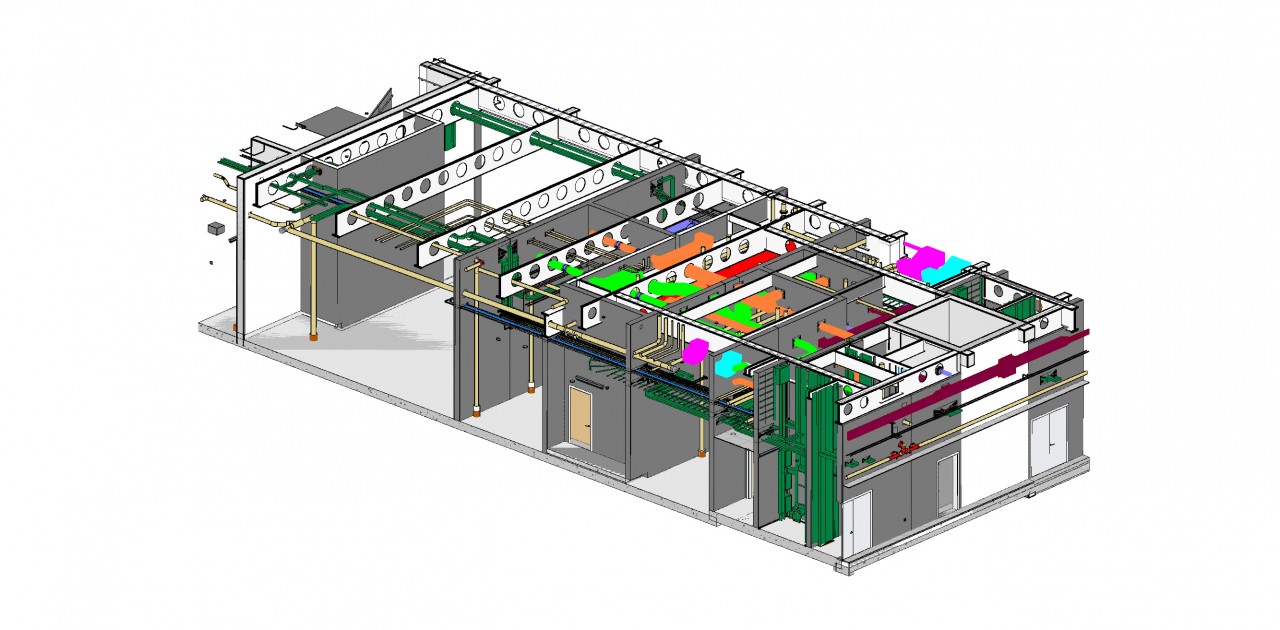Clash Detection
Clash Detection
Our sophisticated Building Information modelling (BIM) systems can save clients vast amounts of time and money. The systems allow us to identify clashes between design elements of a building at an early stage to avoid the delays and costly on-site fixes that were, historically, common issues at the construction stage of a project.
State-of-the-art clash detection technology
Where architects, structural engineers, M&E engineers and MEP contractors once worked in silos, they would often only find out that elements of their designs clashed at the latter stages of the project. By combining each of their design elements into a single federated model, the risk of that happening can be greatly reduced.
Halliday Fraser Munro operate the latest sophisticated clash detection software in both Revit and Naviworks that can be run routinely to scan the model throughout the design process. This will identify both hard and soft clashes and any encroachments at the earliest possible stage.
Resolving clashes at the earliest possible stage
Once detected, these can then be taken to collaboration meetings so optimal solutions can be achieved at the design phase rather than having to make pressured compromises on site. Being able to show these in 3D is incredibly helpful when demonstrating the problem to the client.
Reducing risks in the most complex projects
Our clash management services are especially valuable in complex projects such as hospitals which contain significant amounts of technology and plant requiring sophisticated connections. The software can ensure that the required distances are consistently maintained between conduits, wiring and pipework.
Helping projects run more efficiently
Our advanced clash detection processes represent a huge benefit for both our clients and their building contractors. Our BIM technology allows them to be much more confident that the design is fully joined up and that they will not encounter any nasty surprises during the build. This significantly reduces their risk of time and cost overruns and ensures more efficient on-site operations.

